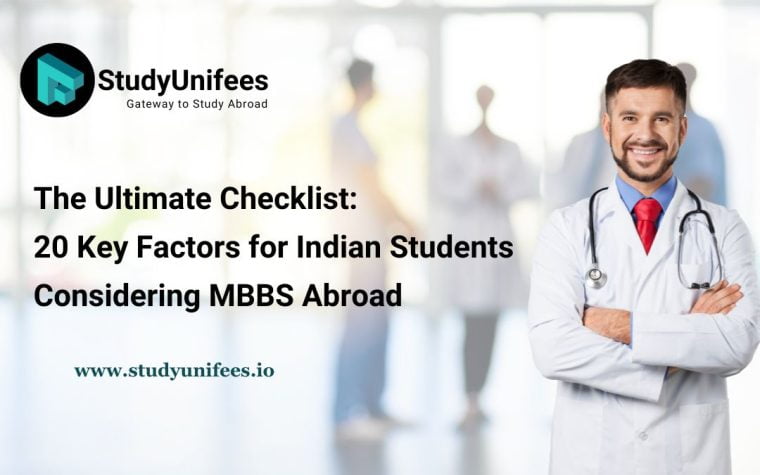Many students around the globe dream of earning a medical degree, especially an MBBS, but are often deterred by the steep costs associated with medical education in various countries. Luckily, pursuing an MBBS abroad emerges as a cost-effective and high-quality option. In this blog, we’re going to explore some of the most affordable yet esteemed places to study MBBS abroad, with a special focus on a few former Soviet Republics in Asia and Europe, along with Russia and Nepal.
MBBS abroad in Former Soviet Republics: Asia and Europe.
1. Kazakhstan
Kazakhstan, a rapidly developing country in Central Asia, is becoming an increasingly popular destination for studying MBBS abroad. Universities like Kazakh National Medical University offer an MBBS program with an emphasis on practical knowledge. The approximate cost of MBBS here ranges from $3,500 to $5,000 per year. For international students, the visa process involves obtaining an invitation letter from the university and applying for a student visa at the Kazakh embassy.
2. Ukraine
In Europe, Ukraine is renowned for its medical education. The country has several top medical universities like Kyiv Medical University, where the MBBS program is recognized globally. The cost of studying MBBS in Ukraine typically ranges from $4,000 to $6,000 per year. International students must apply for a long-term student visa, which requires an admission letter from the university and proof of financial support.
3. Georgia
Another European option for MBBS abroad is Georgia. Universities such as Tbilisi State Medical University offer high-quality education at affordable prices, with MBBS programs costing around $4,500 to $6,000 per year. Obtaining a Georgian student visa involves presenting the admission letter, proof of accommodation, and financial sustainability.
4. MBBS in Russia: A Popular Choice
Russia is one of the most popular destinations for students looking to pursue MBBS abroad. With its long history of medical education excellence, Russian medical universities like Moscow State Medical University offer comprehensive MBBS programs. The cost of MBBS in Russia generally falls between $4,000 and $8,000 annually. For visa requirements, international students need to provide the university’s admission letter and proof of financial means to support their stay in Russia.
5. MBBS in Nepal: A Growing Destination
Nepal is emerging as a favorable destination for MBBS students, especially from neighboring countries. Universities like Tribhuvan University offer MBBS programs at a comparatively lower cost, ranging from $4,000 to $5,000 per year. To obtain a Nepalese student visa, applicants must present their admission confirmation and evidence of sufficient funds.
Studying MBBS abroad presents a valuable opportunity for aspiring medical students. The former Soviet Republics in Asia and Europe, Russia, and Nepal offer affordable MBBS programs without compromising on quality. Each destination has its unique requirements for visas and offers a distinct cultural experience, making them attractive options for international students. With thorough research and preparation, pursuing an MBBS abroad can be a highly rewarding journey.
Indian students aspiring to pursue an MBBS degree abroad must navigate a set of specific rules and guidelines to ensure their overseas education is recognized in India. The Medical Council of India (MCI), now known as the National Medical Commission (NMC), plays a pivotal role in setting these regulations.
First and foremost, students must ensure that the medical institution abroad is recognized by the NMC. The list of recognized universities is available on the NMC website. Studying at a non-recognized university can lead to the invalidation of the degree in India.
Before leaving India, students are required to obtain an Eligibility Certificate from the NMC. This certificate is proof that the student has met the necessary qualifications to pursue MBBS abroad and is eligible to sit for the Foreign Medical Graduates Examination (FMGE) upon their return.
A significant aspect of these rules is the mandatory requirement to clear the FMGE, also known as the Medical Screening Test. This exam assesses an individual’s knowledge and understanding of medicine and is required to practice as a doctor in India. It’s essential for students to be aware that the FMGE has a low pass rate, emphasizing the need for thorough preparation.
Furthermore, starting from 2021, the National Eligibility cum Entrance Test (NEET) has become a mandatory prerequisite for Indian students wishing to study MBBS abroad. NEET qualification is required to ensure that the standard of medical education pursued abroad is on par with India’s standards.
In addition to academic regulations, students should also be cognizant of the legal and visa-related formalities of the host country and adhere to them strictly.
In summary, for Indian students, studying MBBS abroad involves careful planning and adherence to the guidelines laid out by the NMC, including university recognition, obtaining an Eligibility Certificate, clearing the FMGE, and qualifying NEET. These steps are crucial for the degree to be valid in India and for the student to practice medicine in the country.
Pursuing an MBBS abroad can open a spectrum of career opportunities in India, provided the graduates meet certain criteria set by the National Medical Commission (NMC), formerly known as the Medical Council of India (MCI). After obtaining an MBBS degree from a foreign university, the most critical step for graduates is to clear the Foreign Medical Graduates Examination (FMGE) or the National Exit Test (NEXT), planned to replace FMGE in the near future. This exam assesses their medical knowledge to the standards required in India.
Once they successfully pass the FMGE or NEXT, these graduates are eligible to register with the NMC and any State Medical Council, allowing them to practice medicine in India. This registration is paramount, as it legally recognizes the individual as a qualified medical practitioner in India.
MBBS graduates from abroad can choose from a variety of career paths:
- Clinical Practice: After clearing the FMGE and completing the mandatory internship, doctors can start their practice in private or government hospitals. They can also establish their own clinics, offering healthcare services.
- Higher Education: Graduates interested in specialties can appear for the NEET-PG exam to pursue MD/MS. This allows them to specialize in fields like surgery, pediatrics, gynecology, and more.
- Teaching and Academia: With an increasing number of medical colleges in India, there is a demand for qualified faculty. MBBS graduates with a postgraduate degree can join medical colleges as lecturers or professors.
- Research: For those inclined towards research, opportunities abound in clinical research organizations, pharmaceutical companies, and public health departments. This field often requires additional qualifications or training in research methodologies.
- Public Health Sector: Graduates can work with government health services or international health organizations like WHO, UNICEF, etc., focusing on community health, epidemiology, and preventive medicine.
- Hospital Administration: An MBBS degree combined with a degree in hospital administration or public health can lead to roles in hospital management and administration.
- Overseas Opportunities: After gaining experience in India, doctors can explore opportunities abroad, although this may require clearing the respective country’s medical licensing examinations.



